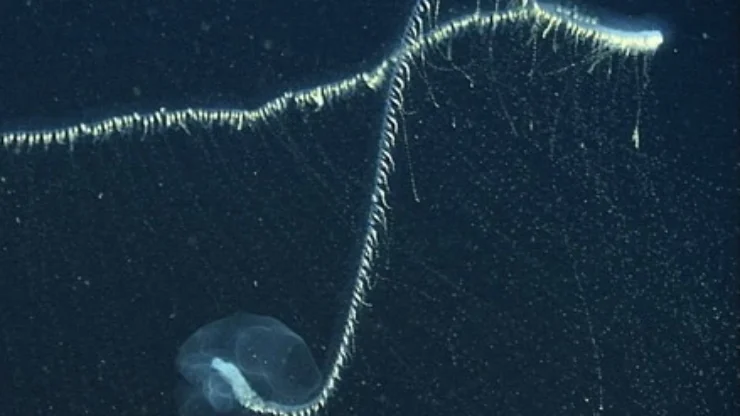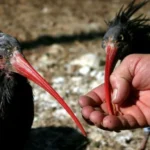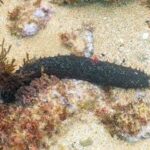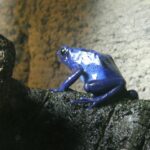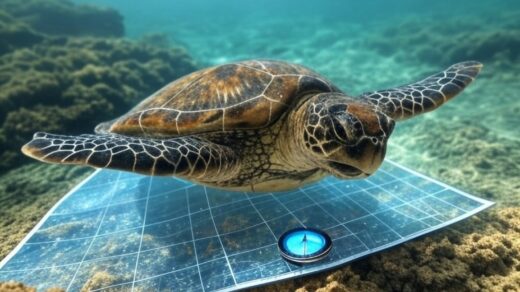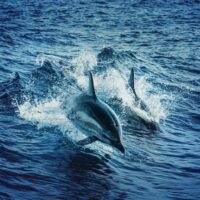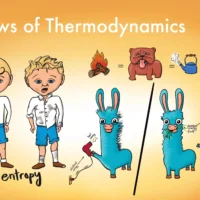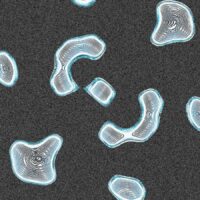Siphonophores are one of the most fascinating and mysterious creatures in the ocean. They kindle inspiration not only in the minds of scientists but also in those of naturalists. These organisms are more than individual animals; instead, they can be colonies that have the possibility of being as long as a blue whale, the largest animal on Earth. This article will proceed to talk about the biology, behavior, ecological importance, and mysteries about siphonophores, thus bringing to light why it’s worth appreciating them.
What Is a Siphonophore?
Siphonophores belong to the class Cnidaria, consisting of jellyfish, corals, and sea anemones. Classifying siphonophores under the order Hydrozoa, these living organisms primarily exist in ocean water, specifically in warm as well as temperate waters. In contrast to any other types of jellyfish, colonies are distinguished because siphonophores are composed of several specialized individuals known as zooids or polyps. Each zooid performs specific functions aiding in the survival of the entire colony.
Body Structure of Siphonophores
Siphonophores are a wonder of adaptive evolution-their structure. A typical siphonophore has a long, buoyant gas-filled float called the pneumatophore, which floats near the water’s surface. This float often looks like the sail of a sailboat, and you might see one poking above the water.
Hanging from this float below are a string of elongated tentacles and specialized zooids serving all sorts of purposes:
– Feeding Zooids (Gastrozooids):
These are the zooids that catch prey.
They have nematocysts-the stinging cells to paralyze such small fishes and planktonic organisms.
Sexual reproduction is also produced by the gametes coming out from such reproductive zooids which form new colonies.
– Locomotive Zooids (Bracts):
Such zooids which are specialized pump the colony inside water because of contraction and relaxation.
With this division of labor, they are properly thriving in their marine environment with a very high level of organization and efficiency.
Length Matters:
Size of Siphonophores
One of the most stunning features of siphonophores is its size. The record-breaking length attained by the Praya Dubia is up to 40 meters or (131 feet) and up to many meters more. In some reports, lengths are said to reach up to 47 meters or more in 154 feet, making it one of the longest animals that exist on earth. Such a fantastic length is attained through the continuous growth and budding of zooids from one fertilized egg.
On the contrary, blue whales have an average length of up to 30 m. Thus, siphonophores surpass not only their own length but even surpass those of the most magnificent marine mammals, such as the blue whale. The sizes of these organisms raise a lot of questions about their biology and how such a structure could actually function properly in this aquatic environment.
The Life Cycle of Siphonophores
The life cycle of siphonophores is complex, occurring through both sexual and asexual methods of reproduction. The next chapter describes the life cycle of siphonophores in further detail to help provide better insight into their ecological role within marine ecosystems.
Asexual Reproduction
Asexual budding is the main method of reproduction by siphonophores. This process begins when a fertilized egg develops into a planula larva that settles on a substrate and matures into a new colony. The colony then grows to produce new zooids through budding. Such allows for extremely rapid growth in population size when circumstances are favorable.
Sexual Reproduction
Most siphonophores reproduce asexually although they have a sexual reproduction phase of life history. Gonozooids produce the gametes which will have to be released in the water column, fertilize and then form new planula larvae which settle to re-colonize.
Lifespan
Actually, siphonophores can last for several months or even years; this all depends on the setting, species type, and many other conditions. They can multiply so dramatically and utilize all resources available.
Habitat and Distribution
Though there exist different types of marine environments that house siphonophores, they are largely found in the open waters known as the pelagic zones. They prefer warmer waters but can also thrive in temperate regions. The distribution might vary depending on several variables including water temperature, salinity, and food resources.
Ecological Role
Siphonophores play an important role in marine ecosystems; they serve as predators but also as prey for other animals.
Predators: Such being carnivorous animals, siphonophores prey on small fish, zooplankton, and other marine animals by immobilizing the latter using paralyzing stinging tentacles before being consumed.
Prey: These are very important food for many species of marine animals including large species of fish, sea turtles as well as certain whales.
Importance in Ecosystem: The importance of the animal can be assessed from the fact that it is represented in marine food webs.
The Shining Adaptation: Perhaps the most astounding characteristic of many species of siphonophores is that they are bioluminescent. That means that light is produced as the result of biochemical reactions within their bodies. This serves a number of purposes:
Deterrent against Prey: A flash of light may scare predators or bring them away from the siphonophore.
Attraction of Prey: Other species use bioluminescence to attract prey so that it will swim closer to be struck by tentacles.
Communication: Bioluminescence can be used as a form of communication between zooids in a colony or between colonies.
Studying bioluminescence in siphonophores for ecological purposes had some spin-off effects, leading scientists to study them in medicine and biotechnology.
Interesting Species of Siphonophores
There are many over 175 described species, but some have been selected here for their special characteristics or impressive size:
1. Praya Dubia
As mentioned earlier, Praya Dubia is one of the longest animals on Earth. The species is mainly located in deep ocean waters off New Zealand and Australia but had been reported operating at depths of over 1,000 meters (3,280 feet). Its great length makes it very interesting for scientists to study deep-sea habitats.
2.Physalia Physalis (Portuguese Man o’ War)
Misidentified as a jellyfish because of its dramatic shape, the Physalia physalis is actually a colonial animal made up of four different zooids. The gas-filled float allows it to float on ocean currents, while its long tentacles can reach a length of 30 meters (98 feet). The venomous tentacles pose dangers to swimmers but are also a key means of catching prey.
3. Rhizophysa
Rhizophysa is another very interesting siphonophore, by the unique way of feeding. The species dwells in large colonies with specialized feeding zooids that catch planktonic animals in complicated webs consisting of tentacles.
Threats Faced by Siphonophores
Although siphonophores are hardy and can adjust to conditions, they are faced with a number of threats from human activities:
Ocean warming strains marine ecosystems to their limits. Climatic variation can alter the availability of food to the siphonophores while affecting its reproductive cycles as well.
Marine pollution is another threat that is likely to impact large chunks of siphonophores. For example, plastics and other chemicals further interfere with the habitat and food availability of siphonophores.
Overfishing can also impact the catch species but also decimates the entire food web via which the siphonophores are part of as predators or prey.
Exploration of Siphonophores: Barriers and Opportunities
Research on siphonophores is immensely challenging, simply because of their elusive nature and deep-sea habitats:
Advancements in Technology
New technologies in underwater research have only in the last decade or so allowed scientists to study them as thoroughly as ever before. Submersibles equipped with cameras enable scientists to capture and study the behavior of siphonophores in the wild without harming their natural habitats.
Citizen Science Projects
Citizen science initiatives also involve citizens engaged in gathering data on observations about marine life, including siphonophores: sighting or photographs during coastline surveys or recreational scuba diving expeditions.
Conclusion
So beautiful examples like the siphonophore, occurring in nature, point to its ingenuity adapting to survival characteristics over such gigantic oceanic environments. Often bigger than a blue whale, and their complicated social structure and organization make these organisms singularly worthy of more study.
As we continue our venture into our oceans’ depths that house these magnificent creatures besides countless other wonders, efforts should go towards conserving marine ecosystems against adverse human impacts such as global warming and pollution.
It may be spread forward to make people aware of these clonal colonies as relevant in the web of the ocean and might assure generations the opportunity to marvel at these enigmatic beings below waves that are far removed from our reach!

Engage with Us:
Stay tuned for more captivating insights and News. Visit our Blogs , Science paper , Study Portal and Follow Us on social media to never miss an update. Together, let’s unravel the mysteries of the natural world.

